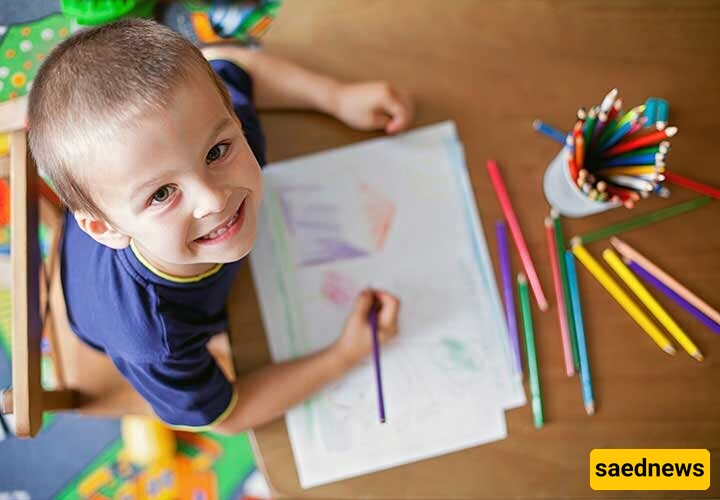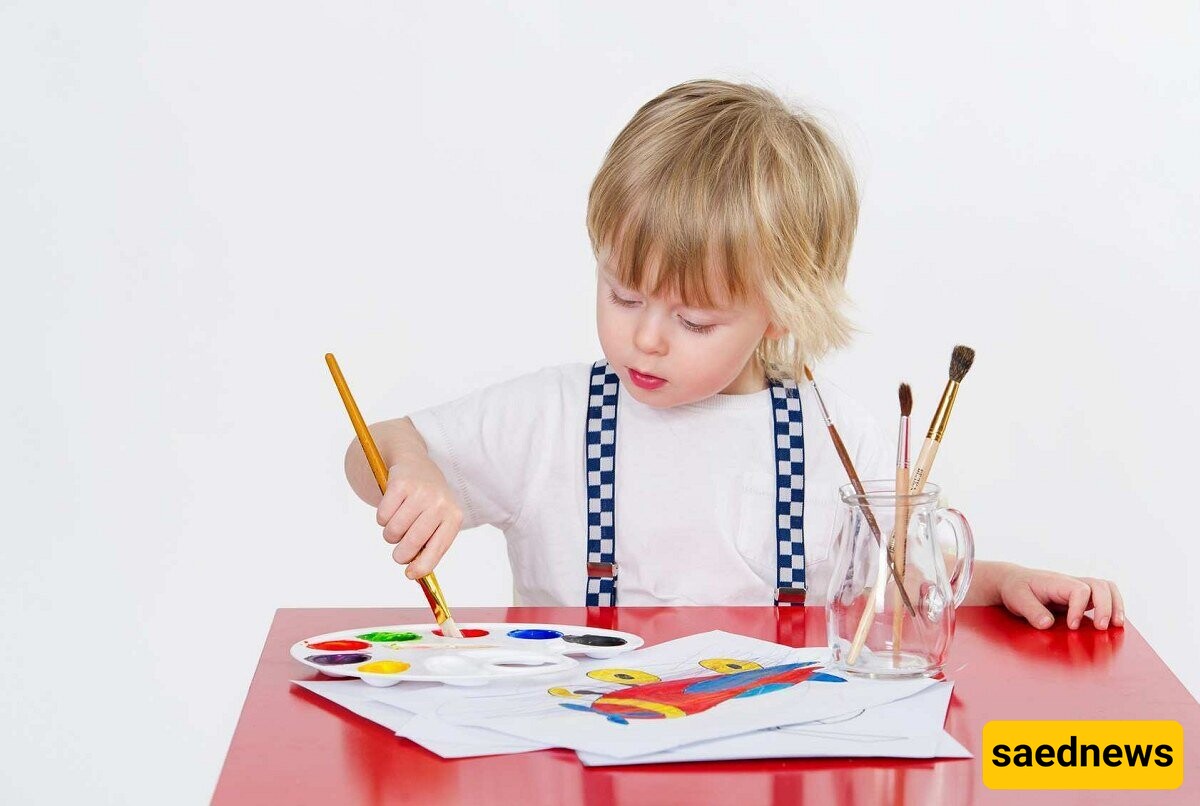Drawing is one of children's favorite activities. A child's ability to create a drawing depends on other skills, such as visual perception and properly holding a pencil. If you want to understand how to assess a child’s talent through their drawings, stay with Saed News as we explore this topic.

It appears that a child's drawing ability is influenced by both genetic and environmental factors. However, drawing skills can also be an indicator of intelligence in adulthood. Research has shown that children who score higher on drawing tests tend to have higher intelligence levels. A study conducted on over 700 pairs of identical and non-identical twins revealed that genetics play a significant role in a child's drawing ability and future intelligence. In fact, a four-year-old's drawings can provide insights into their cognitive abilities up to ten years later.

Psychologists consider drawings to be a valuable tool for understanding a child's inner world. A child’s drawings reflect their perspective on life, their emotional resilience, their role within the family, and their relationships with family members. Drawings can also reveal a child's self-confidence and provide insights into family dynamics and culture. Even a child’s scribbles carry meaning and can indicate their level of creativity.
Children's drawings differ greatly from one another, and an exceptional drawing during childhood does not necessarily mean that the child will become an outstanding artist. It is essential to encourage children to draw freely and allow them to express their thoughts about their artwork without restrictions.
The use of colors in a child's drawings is crucial in understanding their emotions and inner world. Psychologists believe that each element in a child's drawing, including colors, lines, and shapes, holds a specific meaning. The significance of colors in children’s drawings includes:
Black & White: Indicates fear, anxiety, hopelessness, and sadness.
Brown: Represents resistance to parental pressure regarding cleanliness.
Purple: Suggests a desire to be different and may sometimes indicate anxiety.
Blue: Reflects introversion, calmness, peace, and submission.
Green: Symbolizes nature, a need for attention, and a desire to connect with others.
Red: Represents energy and extroversion.
Yellow: Expresses happiness, optimism, and a willingness to engage with others.
Pink: Indicates peace and a desire for balance in life and relationships.
Gray: A neutral color that generally lacks significant meaning in children's drawings.
Drawing is a powerful tool that enhances a child's mental, emotional, and intellectual growth. However, expecting a child to create a perfect drawing is unnecessary. Drawing is an acquired skill that can be improved through good instruction, a supportive environment, and encouragement from parents. It does not require a special innate talent.
Every drawing has content (its subject) and depth (its underlying meaning). This is why child psychiatrists use children's drawings as a diagnostic tool. When interpreting a child's artwork, it is essential to consider their environment and available resources. Until the age of seven, children should be allowed to play and draw freely without structured lessons. The drawing topics given to children should be broad and tangible to help them express their emotions and experiences more easily.
Children typically begin making marks on paper around one year old by tapping a pen or pencil against it. Between 18 to 20 months, they start drawing simple lines. By age three, they attempt to express emotions through their drawings. At this stage, they begin imitating objects and situations. Around ages five and six, children develop greater attention to detail and tend to depict only the most important aspects of their lives. This phase involves replicating patterns and geometric shapes.
From this stage onward, a child's drawings can serve as a personality test and be analyzed using projective techniques.
Drawing is a form of play through which children connect with reality using paper and a pencil. The level of detail in a child’s drawings is an indicator of their intelligence. Children who include more details in their artwork tend to be more intelligent. Highly intelligent children will carefully depict all body parts when drawing a person.
Therefore, a child's drawings can provide early clues about their cognitive abilities and potential intelligence in adulthood.

